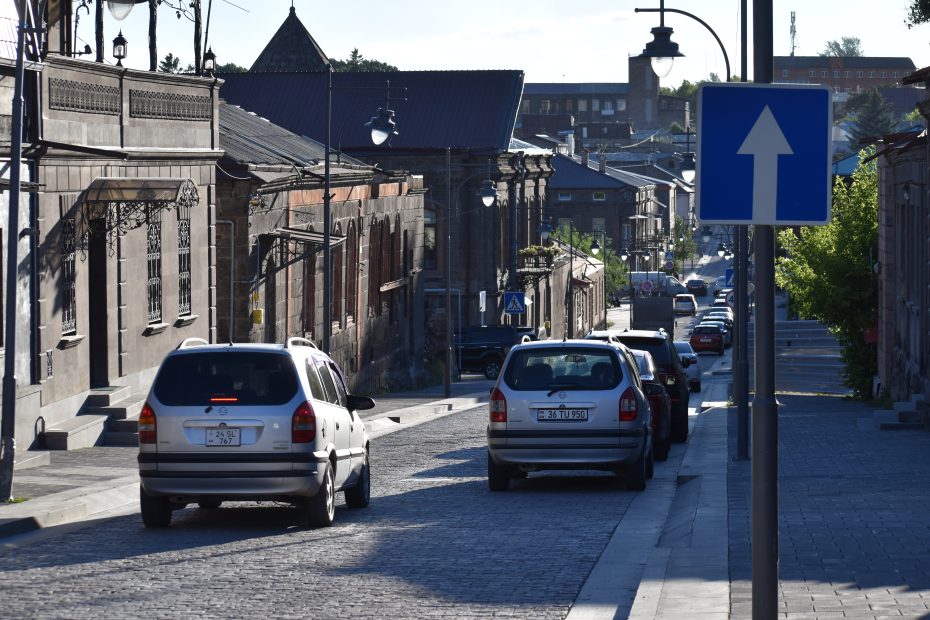Table of Contents
Introduction
Armenia is a country with a rich and complex history, reflected in its incredible wealth of architectural marvels. From ancient pagan temples, to remote mountaintop monasteries, Armenia’s diverse buildings are a feast for the eyes. Many feature a unique Armenian style, with intricate stone carvings and bas-reliefs. Here we explore some of Armenia’s most spectacular architectural highlights.
Geghard Monastery
Geghard Monastery is an incredible medieval monastery carved out of the mountainside. Partly made up of caves and passageways, it has extraordinary acoustics. The complex of churches and tombs dates back to the 4th century, with stunning examples of Armenian medieval architecture. Geghard has been a UNESCO World Heritage Site since 2000.
Ejmiatsin Cathedral
The majestic Ejmiatsin Cathedral is the most important cathedral of the Armenian Apostolic Church. Known as the Vatican of Armenia, its history stretches back to the year 303 CE. The cathedral combines different architectural styles, with elements ranging from 4th century to the 19th century. Its latest restoration was in the 1990s after an earthquake damaged the structure.
Noravank Monastery
The beautiful Noravank Monastery sits in a narrow gorge surrounded by stunning red rock cliffs. Built in the 13th century, Noravank is architecturally unique. Its stone walls feature intricate sculpture work depicting religious imagery and Armenian folklore scenes. Noravank is famous for its acoustics, which allow you to sing a note and hear its echo a few seconds later.
Tatev Monastery
Perched on a clifftop plateau overlooking mountains and canyons, Tatev Monastery looks like part of the landscape. Built between the 9th and 13th centuries, Tatev Monastery is an architectural ensemble of churches, shrines, and buildings. Visitors can now take a cable car called the ‘Wings of Tatev’ to explore the monastery and soak in the far-reaching views of the Vorotan River gorge.
Amberd Fortress
The imposing Amberd Fortress clings to the southern slope of Mount Aragats at around 2,300 meters above sea level. First built in the 7th century, this medieval castle has stood against earthquakes and invasions over the centuries. Amberd’s precarious location commands sweeping views over the Armenian countryside below. A visit transports you back in time.
Sanahin Monastery
Another highlight of Armenian architecture is the 10th century Sanahin Monastery. Sanahin pioneered a style of intricate cross-stone architecture and carving. As a key center of Armenian culture, Sanahin had a large scriptorium and attracted medieval scholars. Along with nearby Haghpat Monastery, Sanahin is a UNESCO World Heritage Site.
Haghpat Monastery
Just across the Debed River canyon from Sanahin sits Haghpat Monastery, founded in the 10th century. Another great example of medieval Armenian religious architecture, Haghpat was one of Armenia’s major cultural centers. The monastery holds some brilliant manuscript illuminations created in its scriptorium. Visit to admire the stone carvings and pretty setting by a river gorge.
Garni Temple
The Garni Temple stands out as Armenia’s only surviving pagan monument. Thought to be built in the 1st century CE, it follows a classical Greek style with an Ionic colonnade. Believed to have been dedicated to the sun god Mithra, the temple is an oasis of Greco-Roman style architecture in Armenia. The cliff behind the temple has striking basalt columns known as the ‘Symphony of Stones’.
Conclusion
This overview shows that Armenia holds some astonishing architectural marvels. Ranging from ancient temples, to remote mountaintop monasteries, Armenia has a wealth of historic buildings for architecture lovers to explore and admire. The incredible variety reflects Armenia’s complex past as a crossroads of civilizations. Visiting the highlights is a feast for the eyes.
FAQ 1: What is unique about Armenian architecture?
Armenian architecture is unique for its intricate stone carvings, bas-reliefs, and cross-stone motifs. Churches often feature pointed domes and stone arches in the Armenian style. The landscape is also integrated into Armenian structures, with remote mountaintop monasteries that form part of their environment.
FAQ 2: When is the best time to visit Armenia’s architectural sites?
The best times to visit Armenia for architecture are spring (April-May) and fall (September-October), when temperatures are mild. Summer can be very hot. Many key sites are still accessible in winter except for those in high mountains like Tatev.
FAQ 3: What is the oldest structure in Armenia?
The oldest surviving structure in Armenia is the pagan Garni Temple, thought to have been built in the 1st century CE with Greek architecture. This makes it about 300 years older than the 4th century Geghard Monastery complex.
FAQ 4: Are Armenia’s monasteries still active today?
Yes, many monasteries like Geghard, Tatev, and Sanahin are still active religious centers of the Armenian Apostolic Church. Monks will usually still be there going about their daily rituals and prayers. However, they are also open to visitors.
FAQ 5: How do I get around Armenia’s architectural sites?
It’s easiest to rent a car in Armenia to access monasteries and sites in the countryside. Alternatively, day tours from Yerevan are available, either private or small group. For Tatev, use the Wings of Tatev cable car. Hitchhiking works too.
